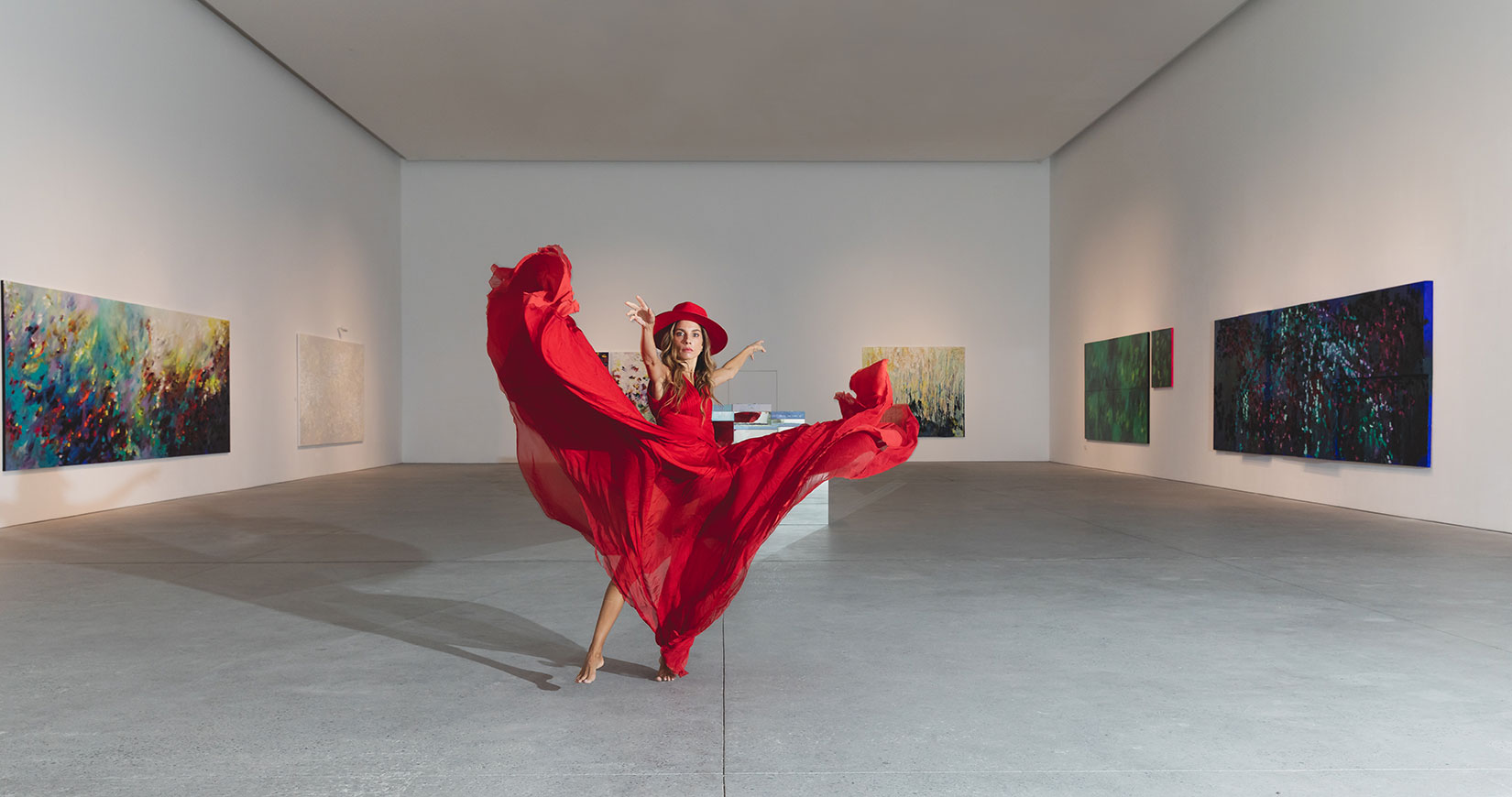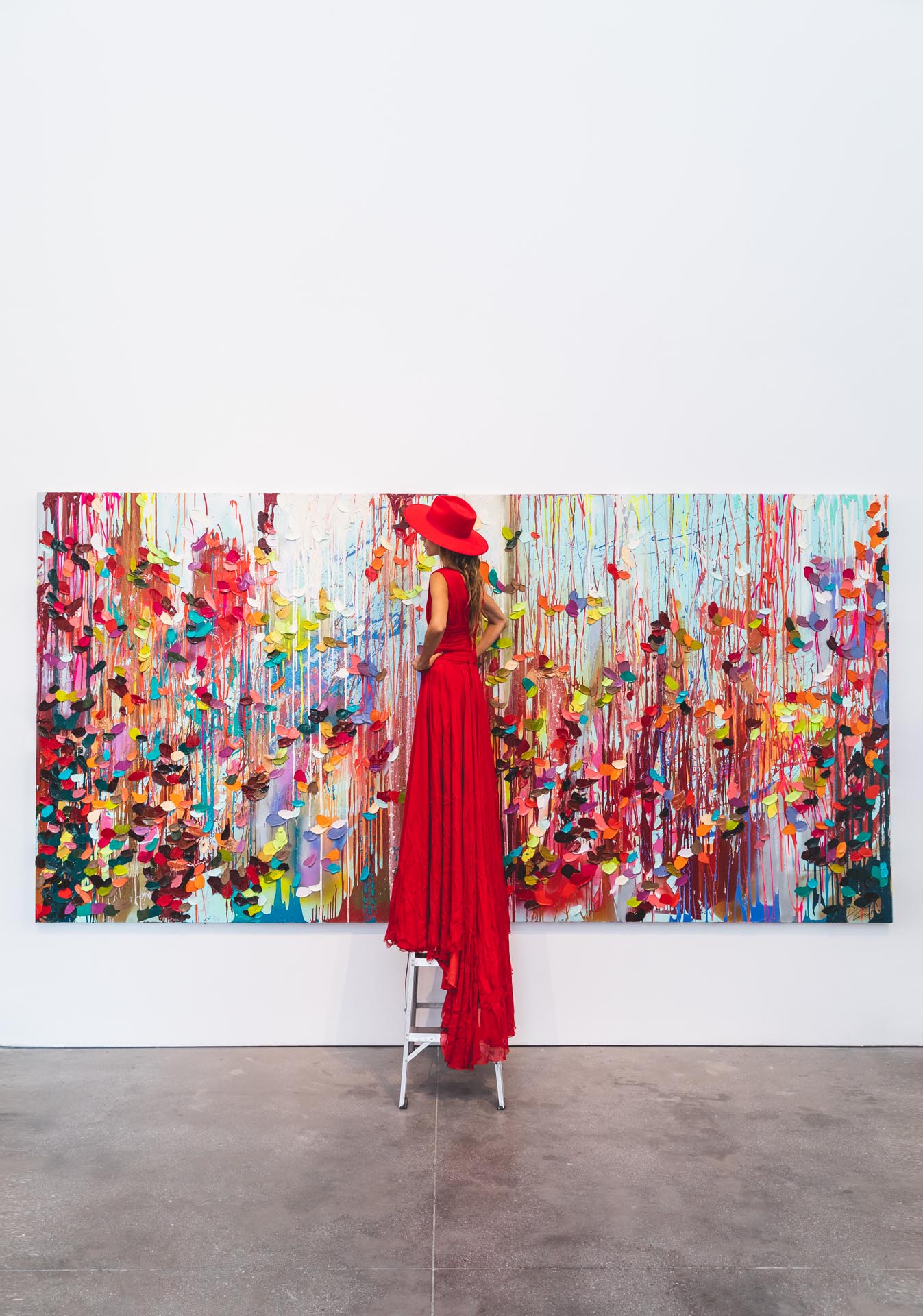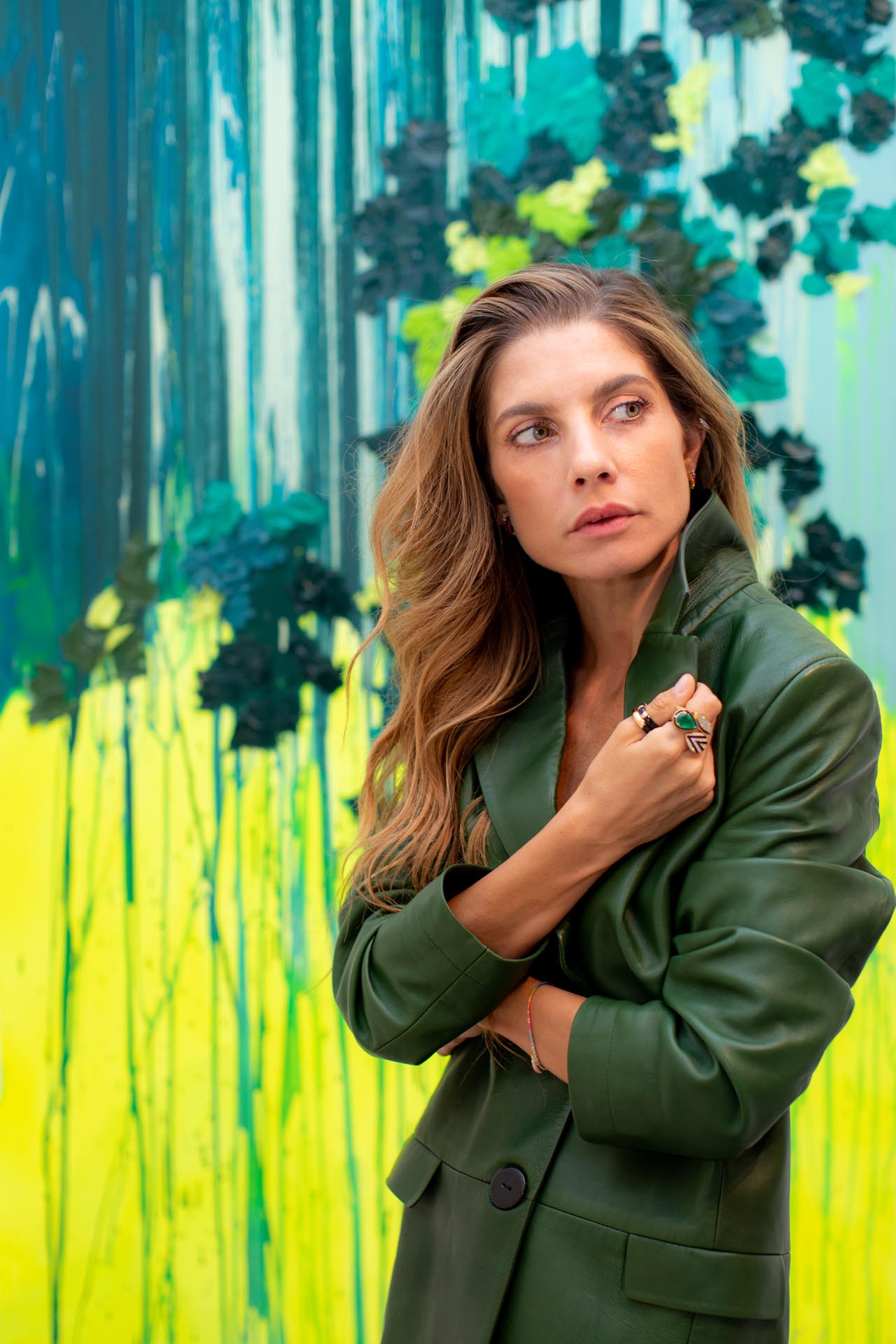Copyright © 2025 Motivate Media Group. All rights reserved.
Ana D’ Castro’s first solo show at Leila Heller Gallery is an enchanted garden of colour
The Portuguese artist-cum-architect's exhibition showcases her relationship with colour and space

“From my father’s side, my grandfather was an artist and from my mother’s side, the family business [was in the manufacturing of] industrial paints. [So, from] an early age my fascination with paints, pigments and synthetic components was always there,” begins Ana D’Castro, whose first exhibition, ‘The Enchanted Garden’, is currently on show at the Leila Heller Gallery in Dubai’s Alserkal Avenue.
“I have always loved colour, and I remember since an early age being fascinated with the vibrancy of each gradient and how you mix them to create other colours. It’s a very precise method where you sit in a laboratory and measure with great precision how many milligrams of each dye can be mixed to create a determinate tone,” she explains.

‘Enchanted Garden’ is composed of a series of abstract paintings in which colour is the protagonist and acts as a tool for expressing emotion using a juxtaposition of different pigments and layers; some lying flat, while others – thick flickers of paint like flower petals – seem to be almost ready to escape the canvas.
The artworks also offer a glimpse into how light interacts with colour and the surrounding environment during different times of the day through the artist’s layered approach. Initially, we see the first layer – the faded horizon where colours bleed into one another – and then the second, where richer patches of oil paint create a more heavily textured and tri-dimensional effect. The ‘petal’ effects, lastly, flow across the canvas as if flying in an invisible wind. All in all, D’Castro’s ‘Enchanted Garden’ is a study of colour in itself, where paintings present an explosion of chromatic emotion, composed into a series of either multi- or monochromatic canvases.

“Through my practice, my aim is to manipulate colour and the subtle variations of the same gradient, in order to create volume, depth and perspective within the canvas. While composing the movement of the piece, I carefully study how colour will add or subtract light and shadow into the ensemble. Colour plays a major role in my artworks, and I am constantly looking for the exact tone, the role it plays by allocating in a specific place, and how instantly this act either dilutes or enhances the volumetric composition,” the artist shares.
The exhibition itself is set up using a specific foundation concept created by the artist, where a modular system forms the base of all canvases, with the prime module being two metres by two metres. This module is then multiplied into triptychs and diptychs or subdivided into smaller modules of 1m x 1m and 0.5m x 0.5m, just like a structural metric grid that is fundamental to any architectural foundation.
Photography by Joachim Guay
The Latest
Textures That Transform
Aura Living’s AW24 collection showcases the elegance of contrast and harmony
Form Meets Function
Laufen prioritises design, functionality and sustainability in its latest collections
Preserving Culture, Inspiring Creativity
Discover the Legacy of a Saudi Art Space: Prince Faisal bin Fahd Arts Hall explores the Hall’s enduring influence on the cultural fabric of Saudi Arabia
Channelling the Dada Spirit
Free-spirited and creative, The Home Hotel in Zurich injects a sense of whimsy into a former paper factory
id Most Wanted- January 2025
Falaj Collection by Aljoud Lootah Design
Things to Covet in January
identity selects warm-toned furniture pieces and objets that align with Pantone’s colour of the year
Shaping the Future of Workspaces by MillerKnoll
Stacy Stewart, Regional Director Middle East & Africa of MillerKnoll discusses the future and evolution of design in workspaces with identity.
Shaping Urban Transformation
Gensler’s Design Forecast Report 2025 identifies the top global design trends that will impact the real estate and built environment this year
Unveiling Attainable Luxury
Kamdar Developments has launched 105 Residences, a new high-end development in Jumeirah Village Circle.
The Muse
Located in the heart of Jumeirah Garden City, formerly known as ‘New Satwa’, The Muse adds to the urban fabric of the area
Cultural Immersion Meets Refined Luxury
The Chedi Hegra opens its doors in AlUla’s UNESCO World Heritage Site
Redefining Coastal Luxury
Sunshine Bay on Al Marjan island combines seaside views, exceptional design, and world-class amenities to create a unique waterfront haven
















